Winnipeg River Heritage Museum: We Are The People Of The River
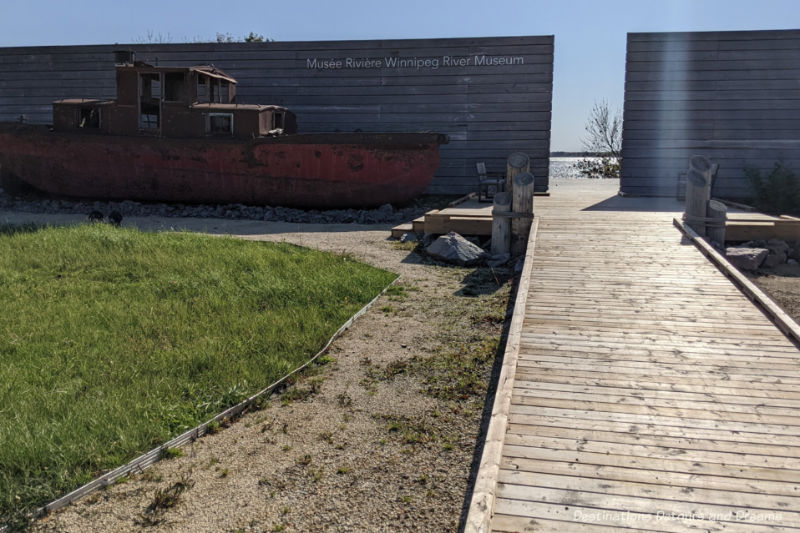
Museum in St-Georges, Manitoba, Canada celebrates the nature, people, and history of the Winnipeg River area
In the quaint village of St-Georges, Manitoba, Canada, just over 140 kilometres (87 miles) northeast of Winnipeg, you’ll find an impressive museum. The Winnipeg River Heritage Museum tells the story of the Winnipeg River and its communities.
Building of the museum completed in 2019. It is actually two buildings with the large steel paneling of the street side façade reminiscent of the older construction practice of large wood planking. When you go through the opening between the two buildings, you’re greeted with an expansive and beautiful view of the Winnipeg River.
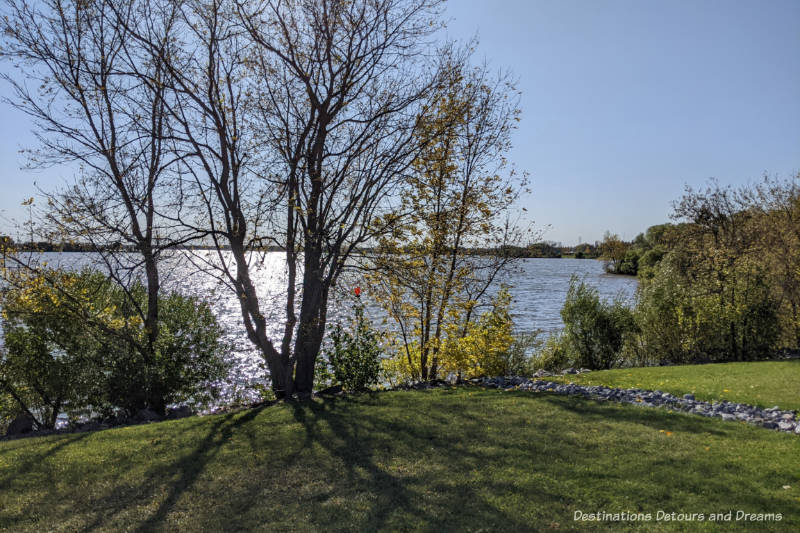
The museum is located on the site of the former St-Georges Museum, which opened in 1970 and contained many local memories, stories, and history. In May of 2014, the museum caught fire. It had undergone a dramatic renovation two years prior to that. There were new exhibits and ambitious plans for the future following the theme “We are the People of the River.” While the local fire department battled the blaze, volunteers managed to save or salvage much of the collection. The building, however, was not saved. Several years later, a new modern building was constructed to house the Winnipeg River Heritage Museum.
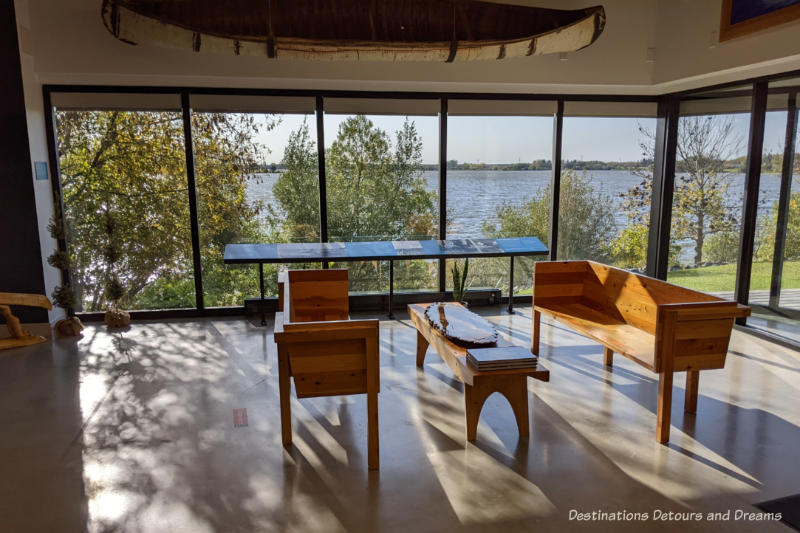
The lobby and entrance area of the main museum building features a wall of windows offering a view of the Winnipeg River.
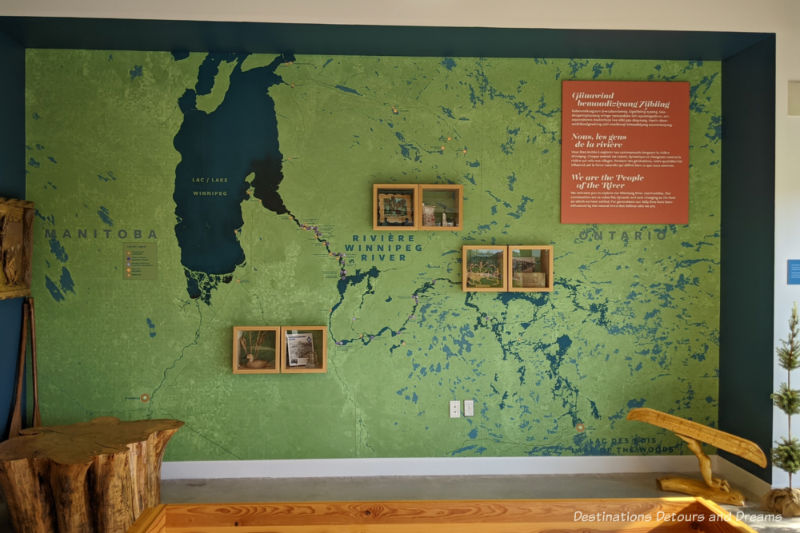
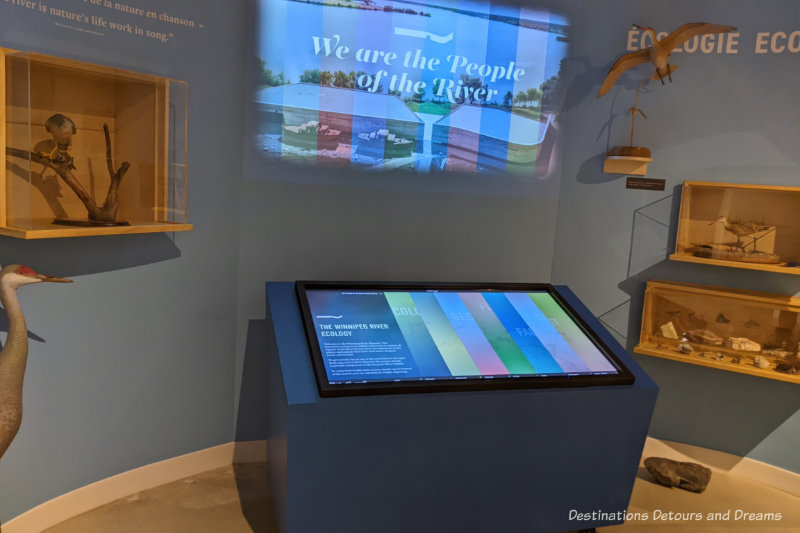
An interactive display inside the museum contains information about the ecology of the river (including locations of dams, towns and villages, and portage routes), formation, geology flora, fauna, and geography of the Winnipeg River. As you select and read information on the display table, images are projected on the wall above it. Listen for the sounds of glacier ice cracking in the early years of the formation section and the loon in the bird section.
The Winnipeg River is a by-product of Lake Agassiz, an immense lake formed as the ice sheet that once covered much of North America about 30,000 years ago disintegrated. The melting of remaining Hudson Bay ice around 8,000 years ago caused Lake Agassiz to drain nearly completely, leaving behind some lakes and rivers, including the Winnipeg River.
The Winnipeg River flows northwest from Lake of the Woods in Ontario, running for about 235 kilometers (146 miles) from the Norman Dam in Kenora to its mouth at Lake Winnipeg in Manitoba. Its watershed encompasses three different eco-zones: Boreal Forest, Parklands, and Grasslands. The First Nations people travelled the Winnipeg River for thousands of years. Early European settlers and travellers continued to use the Winnipeg River as their main route for exploration and the fur trade. This led to people settling along the banks.
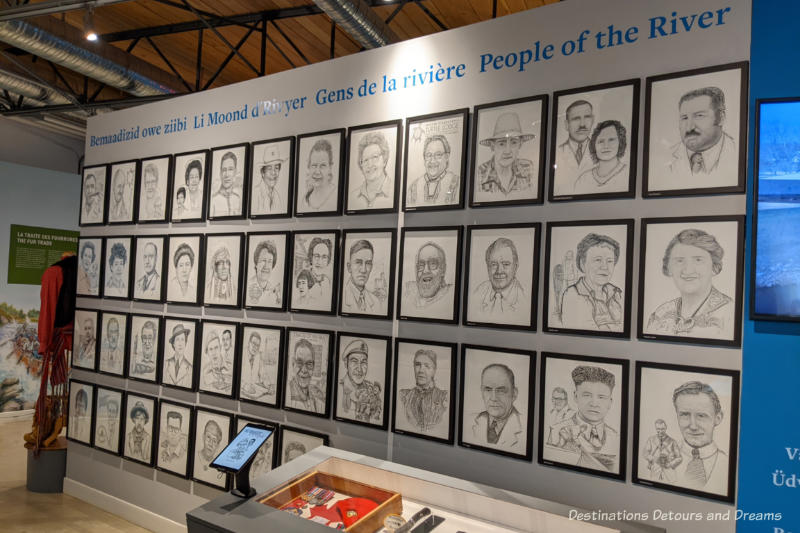
Drawings of 43 people important in the history of the river line one wall. A tablet allows you to pull up information on any particular person.
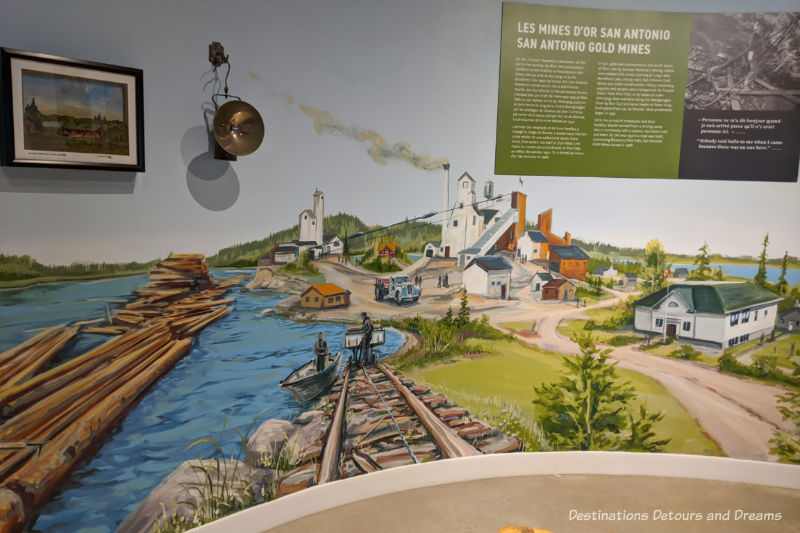
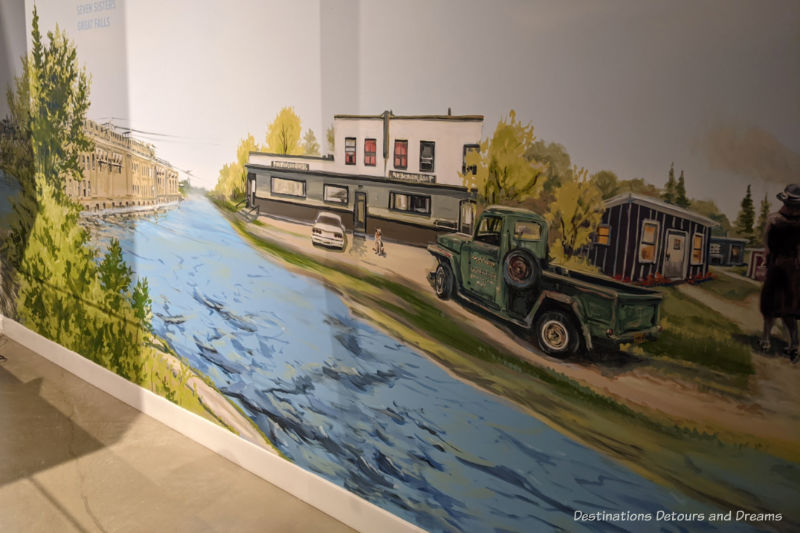
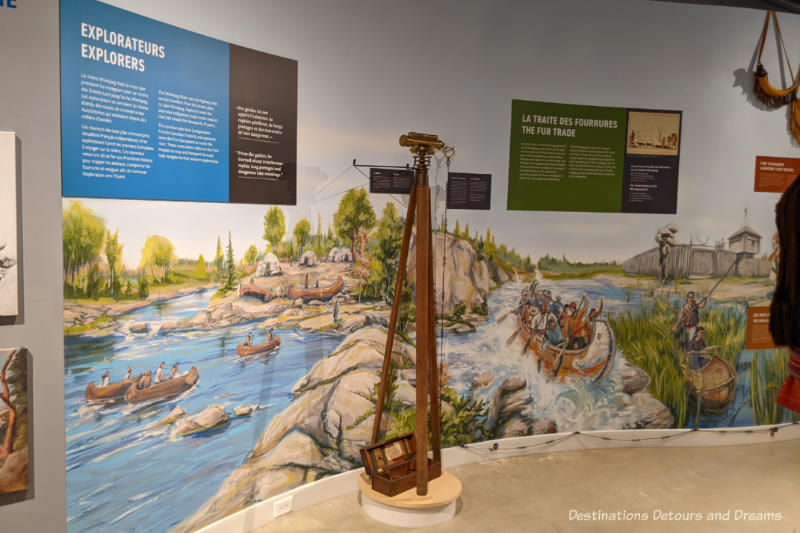
Murals depicting historical scenes cover the bottom half of the walls in the main museum building and can also be found on walls in the second building (the ferry building). Artists Michel Saint Hilaire, Jessica Canard, Henry Guimond, and Sheldon Sveinson created art work for the museum.
The history explored in the museum includes Indigenous life, early exploration, the fur trade, pioneer life, agricultural life, the building of communities, tourism, logging and sawmills, and the San Antonio gold mine at Bissett.
An interactive display similar to the one covering the ecology of the river provides information about the dams on the river. You can learn about the dams, how they work, and their impact on First Nations.
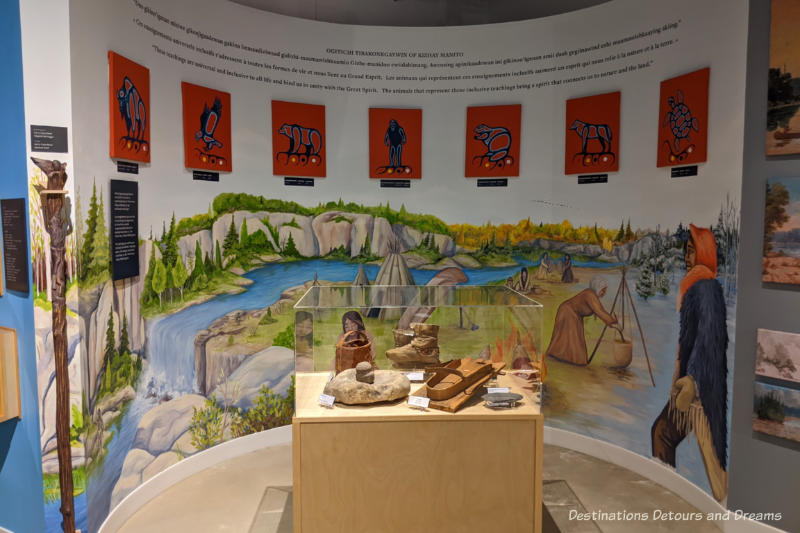
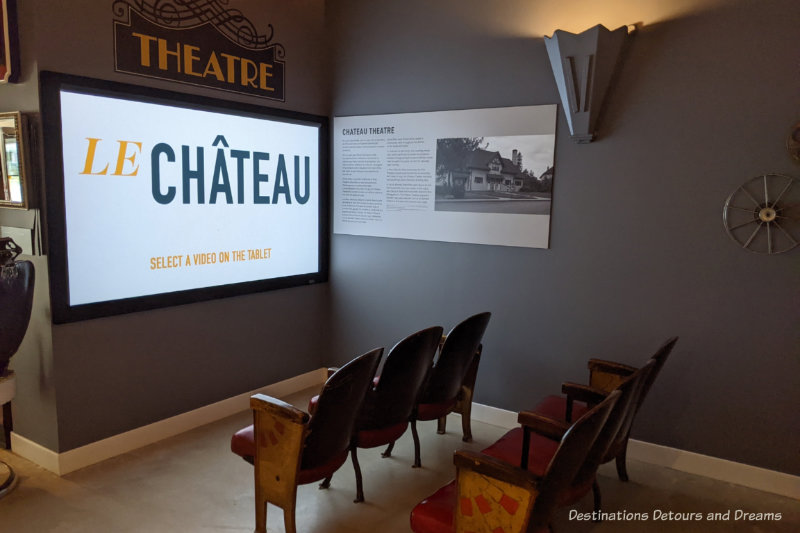
A small area containing original seats from the Chateau Theatre, which opened in Pine Falls in 1937, allows visitors to view a video of their choice. My friend and I chose to watch a video about the log drive. It was fascinating. The seats are pretty low, okay enough to sit in, but a bit tougher for us older folk to get out of!
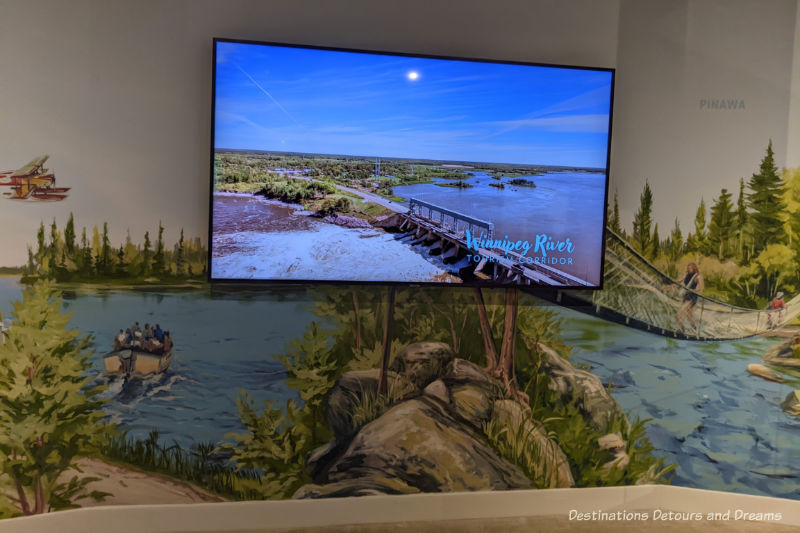
One of the museum’s information panels talks about weekend tourism in the 1930s and contains a photo from that time frame. A screen nearby highlights tourism today. With natural beauty, boating and fishing opportunities, cabins and resorts, hiking and other outdoor activities, the Winnipeg River area remains a popular tourism location.
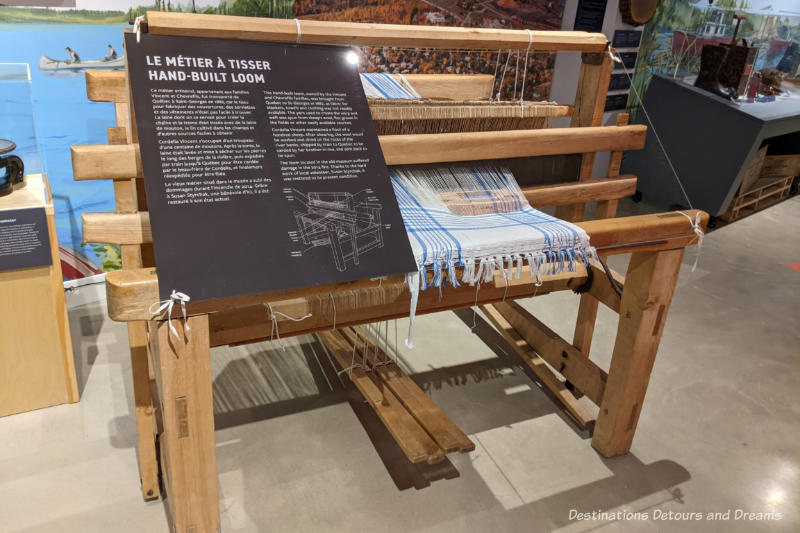
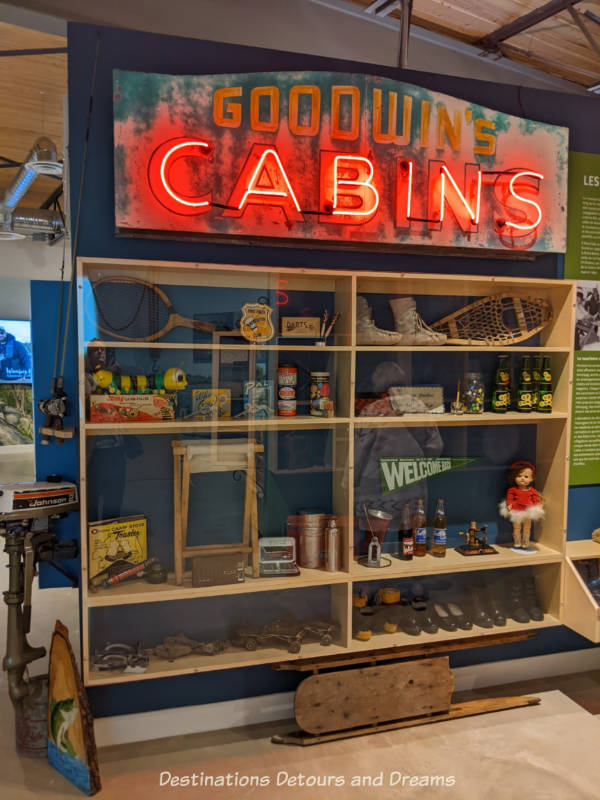
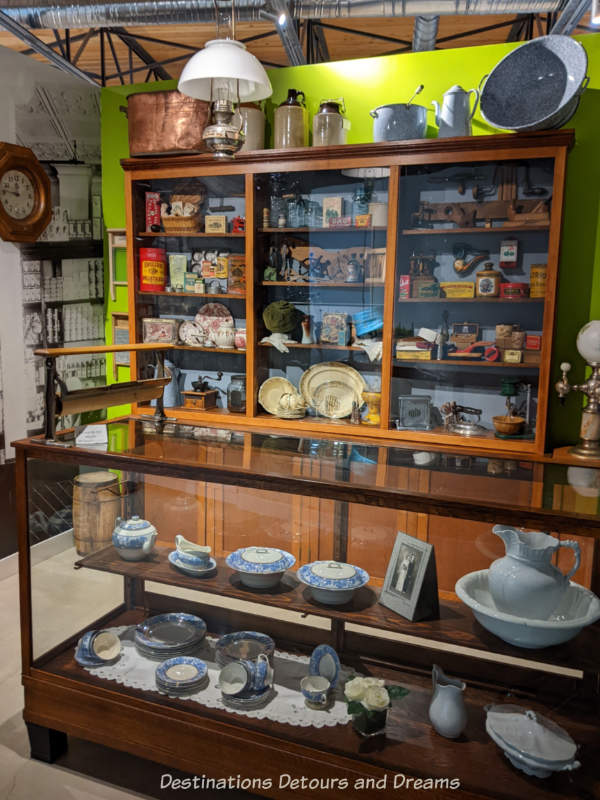
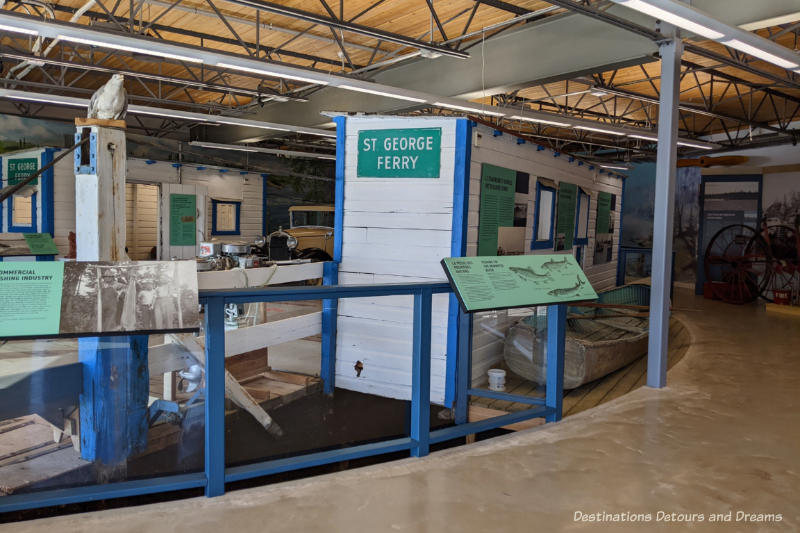
The second building houses the St.-Georges Ferry. The building was purpose-built for the ferry. You get a strong whiff of the creosote used on the bottom of the boat when you enter the building. Built in 1946, the ferry shuttled passengers across the Winnipeg River for three decades before being decommissioned in 1974.
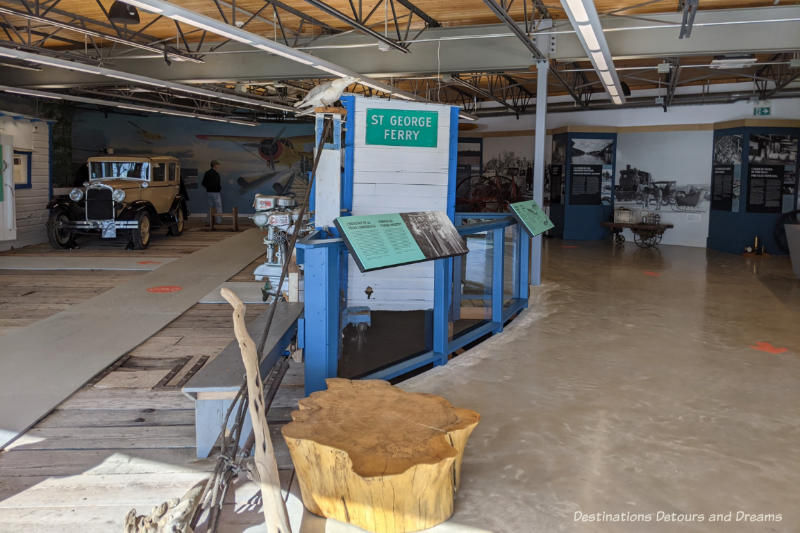
The building contains more than just the ferry. Other exhibits highlight the commercial fishing industry, the first farm in St-Georges, the role of horses in the development of communities, the role of the railway, early airplanes, harvesting wild rice, fighting bush fires, the pulp and paper mill that operated at Pine Falls from 1927 to 2009, mining, and reforestation. Listen for the occasional sounds of the ferry horn and train whistle.
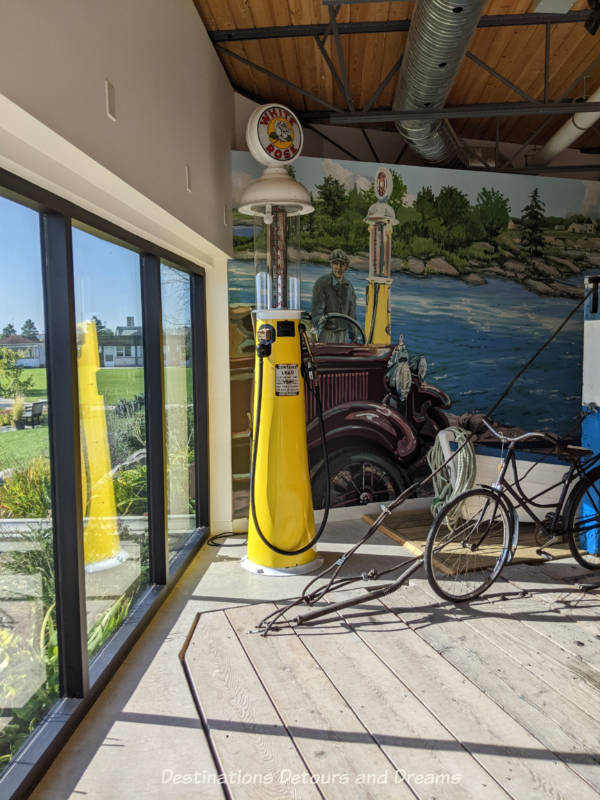
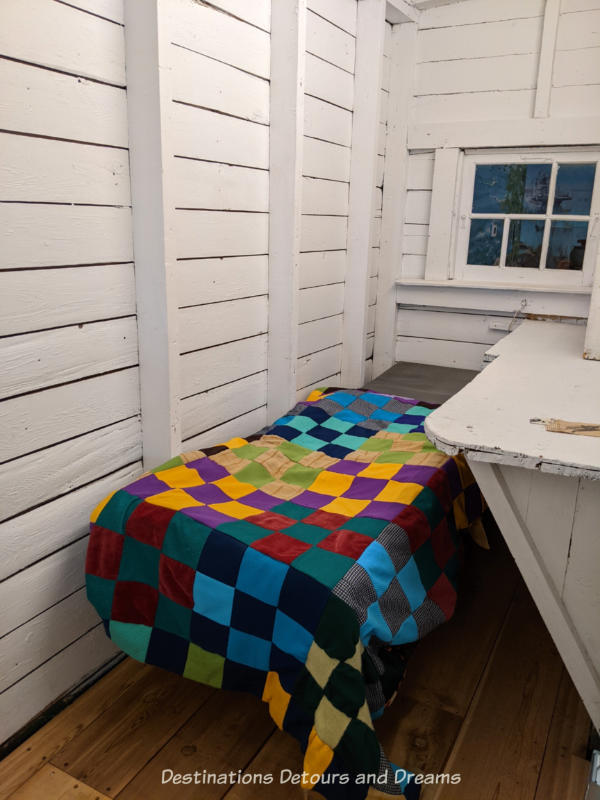
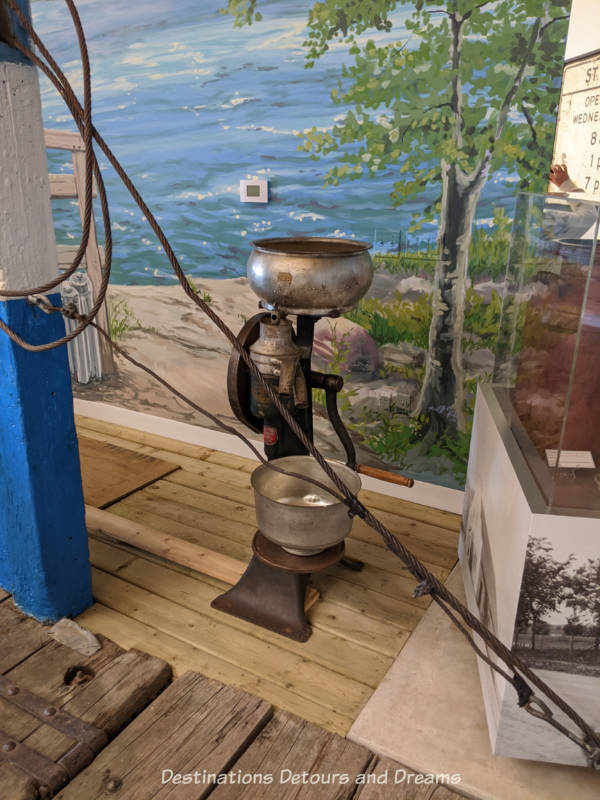
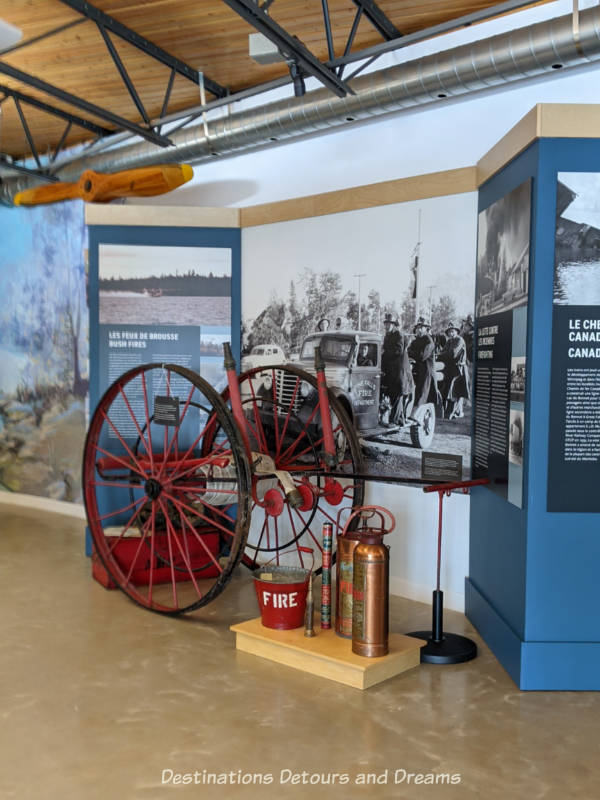
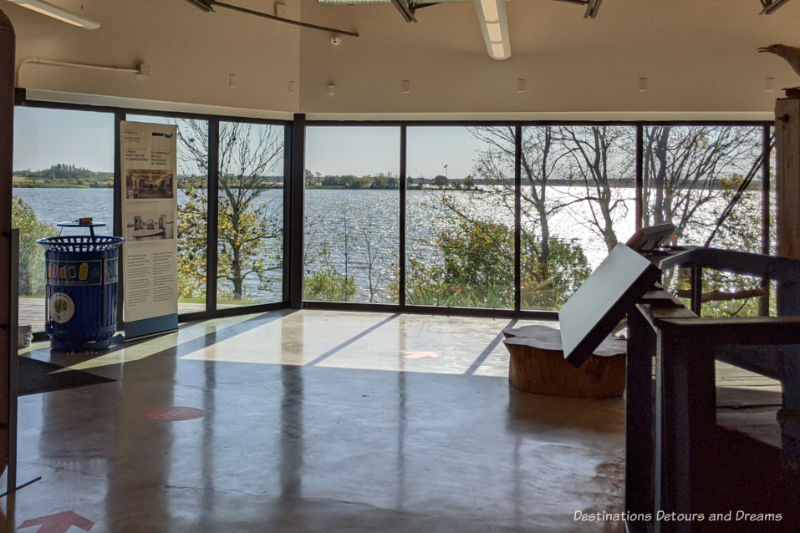
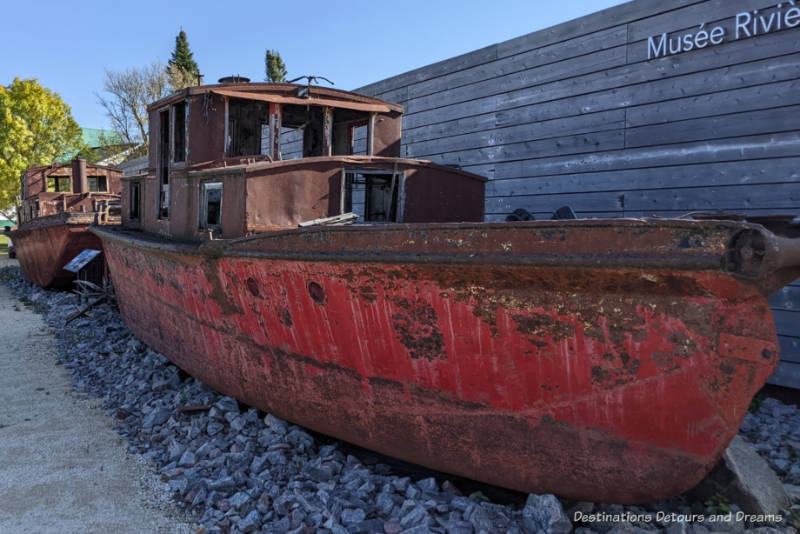
Two old weathered tugboats sit in front of the museum. Tugboats played an important role in the logging industry, transporting millions of logs to the paper mill each year.
Located in a picturesque setting, the Winnipeg River Heritage Museum makes good use of art, technology, artifacts, text, and sound to tell the Winnipeg River story. It was well worth the drive from the city. The museum is open daily throughout the entire year.
TIP: The restaurant at Papertown Inn in Pine Falls, a five minute drive from the museum, is a good place to stop for lunch or a bite to eat before or after your visit to the museum.
Never miss a story. Sign up for Destinations Detours and Dreams free monthly e-newsletter and receive behind-the-scenes information and sneak peeks ahead.
PIN IT
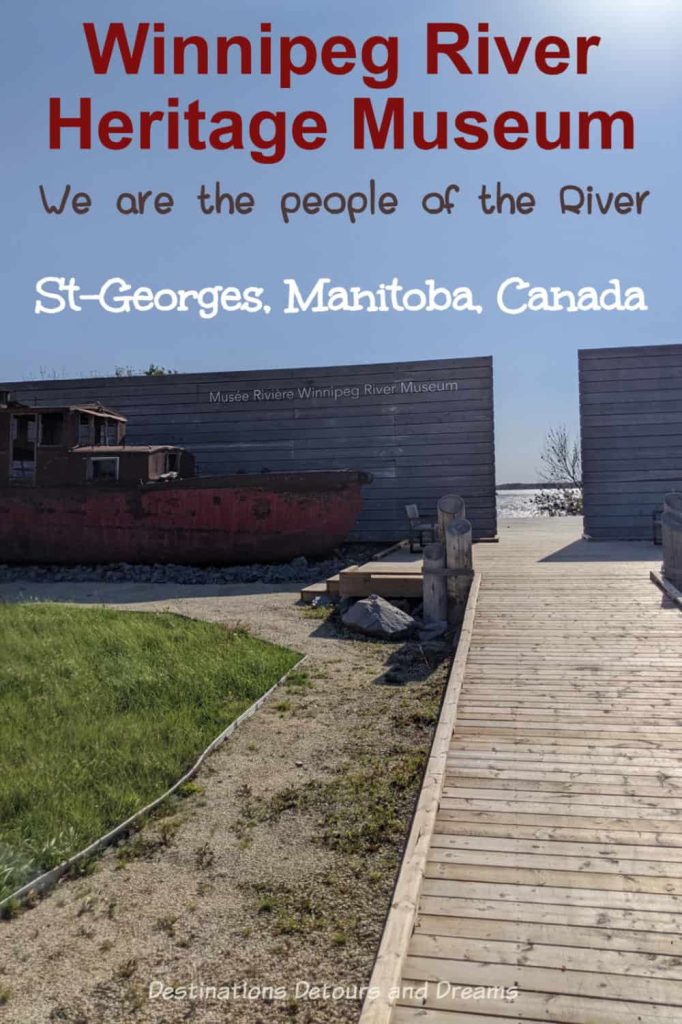
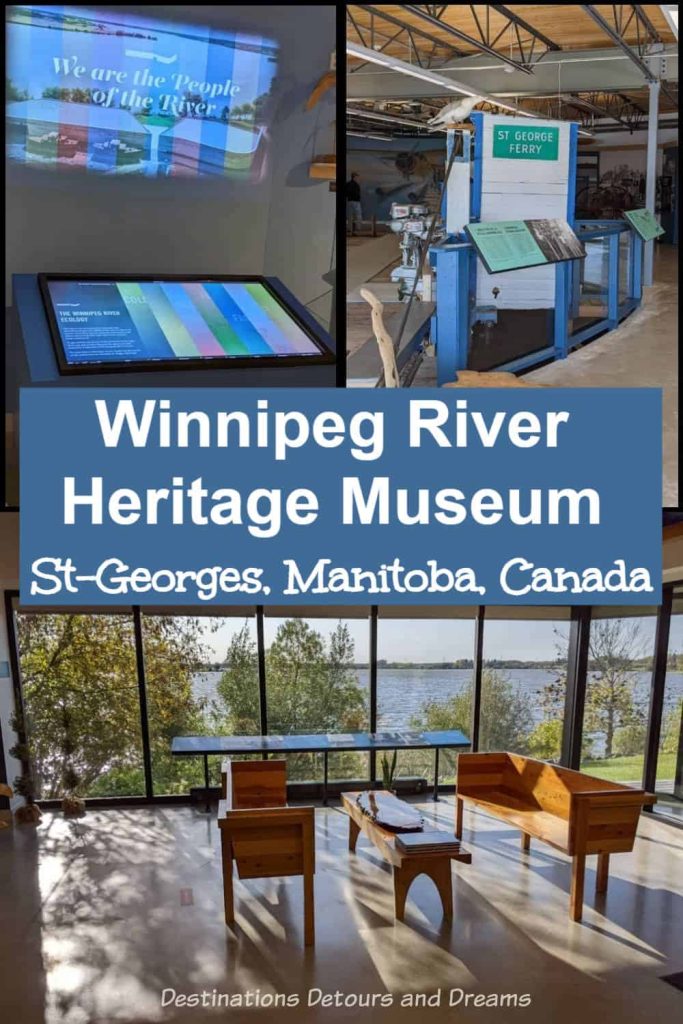

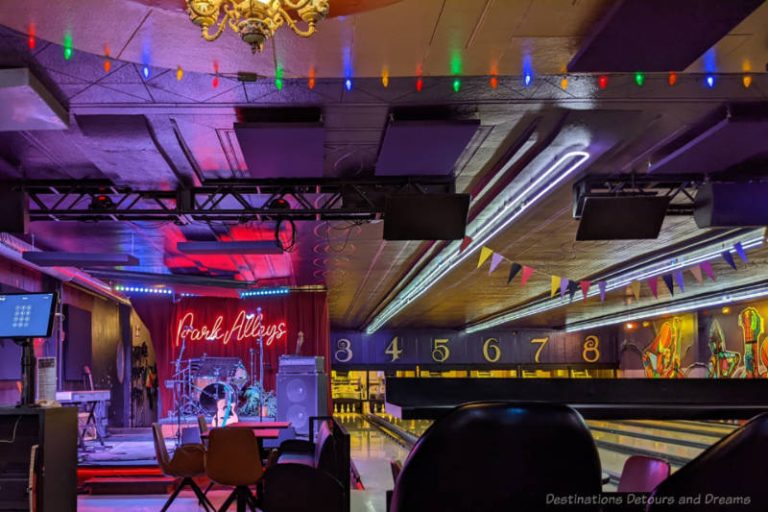

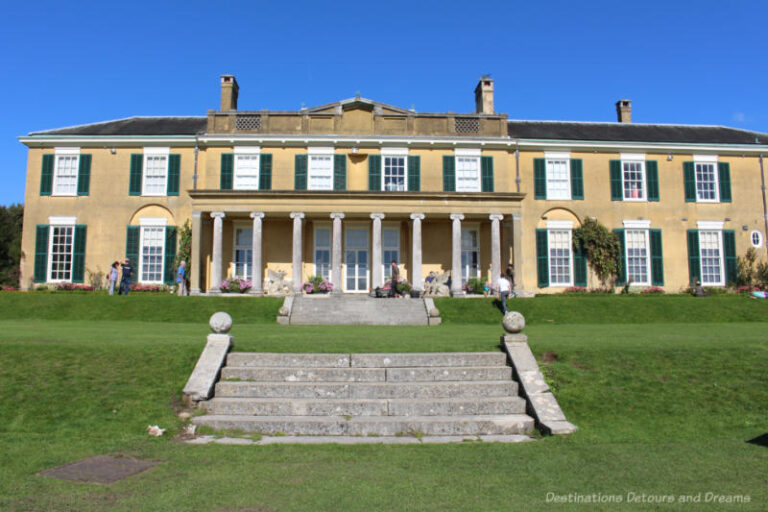
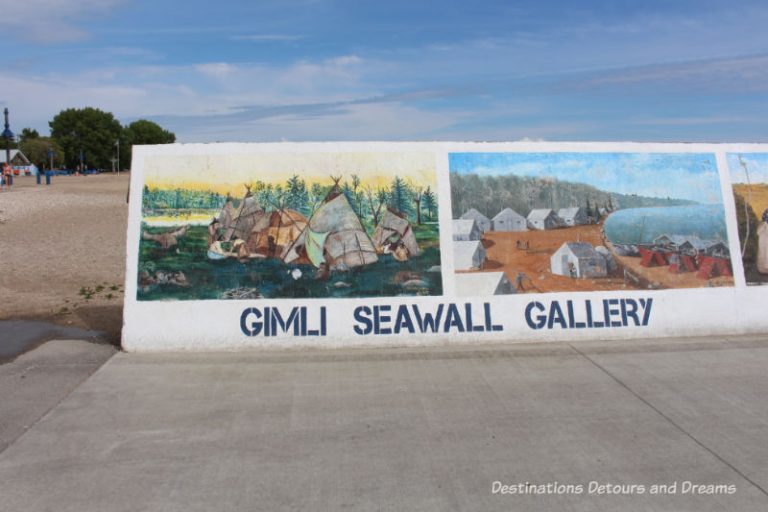
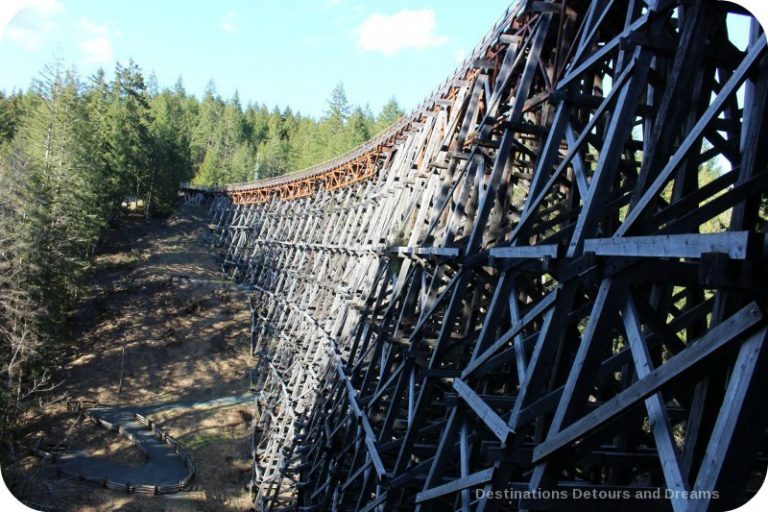
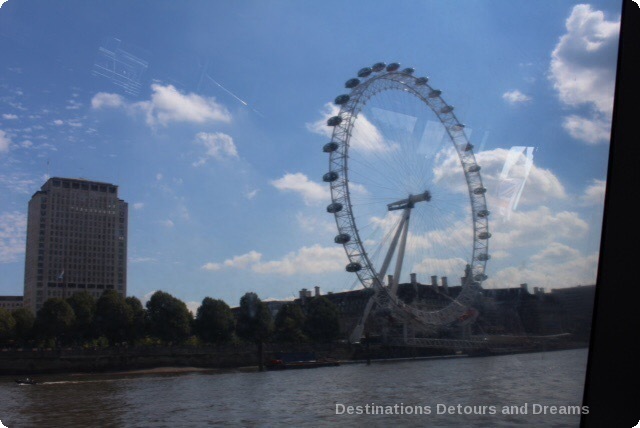
Love the walls of windows. You can read about the history of the eared and then look up and see the river. Nice touch.
What a fascinating glimpse into the heritage of the Winnipeg River! My family is planning a road trip that will take us through the area, and this museum sounds like a must-see to really connect with the local history. Since my husband works in auto repair, road trips are kind of our thing—making sure the car is adventure-ready is part of the fun. Thanks for the recommendation—can’t wait to check it out!
Definitely adding this to my bucket list of places to visit. Thanks for sharing!